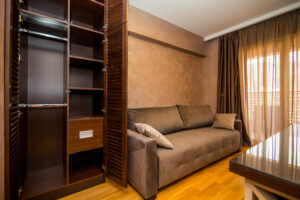
Singapore, a bustling city-state, is renowned for its limited land area and high population density. This scarcity of space has driven residents to innovate in interior design, especially when it comes to storage solutions. One of the most effective ways to optimize living spaces in Singaporean homes is through built-in wardrobes. These custom storage solutions maximize available space and enhance the aesthetic appeal of interiors. In this article, we will understand common types of built-in wardrobes and how to maximize your space with built-in wardrobes in Singaporean homes.
Types of Built-in Wardrobes
There are several types of built-in wardrobes, some of them are:
1. Sliding Door Wardrobes

Sliding door wardrobes are particularly popular in Singapore due to their space-saving design. Unlike hinged doors, sliding doors do not require additional clearance to open, making them ideal for small rooms or tight spaces. They can be designed with various finishes, such as mirrors or glass, to enhance the room’s overall look. Sliding door wardrobes are also highly customizable, allowing homeowners to incorporate shelves, drawers, and hanging spaces that suit their specific needs.
2. Walk-in Wardrobes
Walk-in wardrobes offer a luxurious storage solution for those with the space to accommodate them. These wardrobes typically occupy an entire room or a dedicated section of a bedroom, providing ample space for clothing, shoes, and accessories. Walk-in wardrobes can be customized with various storage options, including hanging rods, shelves, drawers, and even seating areas. While walk-in wardrobes require more space than traditional built-in wardrobes, they offer unmatched organization and accessibility.
3. Corner Wardrobes
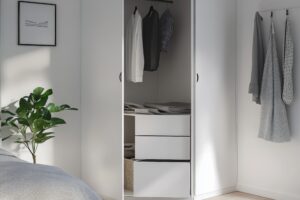
Corner wardrobes are an excellent solution for awkward spaces that are often left unused. These wardrobes are designed to fit snugly into corners, making the most of every inch of available space. Corner wardrobes can be customized to include a mix of hanging space, shelves, and drawers, making them a versatile and practical storage option. In Singaporean homes where space is at a premium, corner wardrobes can be a game-changer in maximizing storage capacity.
4. Floor-to-Ceiling Wardrobes
Floor-to-ceiling wardrobes are designed to use every inch of vertical space, making them an ideal choice for smaller homes. By extending the wardrobe to the ceiling, homeowners can create additional storage for items that are used less frequently, such as seasonal clothing or luggage. Floor-to-ceiling wardrobes can be customized with various internal layouts, including hanging space, shelves, and drawers, to suit individual storage needs.
Design Considerations for Built-in Wardrobes
When planning a built-in wardrobe, several factors need to be considered to ensure that the final product meets your needs and enhances your living space.
1. Location and Space
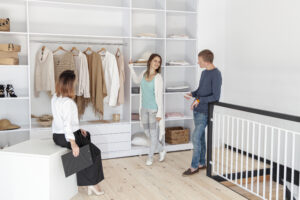
The first step in designing a built-in wardrobe is determining where it will be located. Consider areas of your home where space is underutilized or where additional storage would be beneficial. Common locations include bedrooms, hallways, or even under stairs. Once you have chosen a location, measure the available space carefully to ensure that your wardrobe fits perfectly. Remember that built-in wardrobes are permanent fixtures, so it’s essential to get the dimensions right.
2. Internal Layout
The internal layout of your built-in wardrobe is crucial to its functionality. Consider what you need to store and how you prefer to organize your belongings. A mix of hanging space, shelves, and drawers usually works well, but the specific arrangement will depend on your personal needs. For instance, if you have a lot of formal wear, you may want more hanging space, while those with extensive shoe collections might prioritize shelves.
3. Materials and Finishes
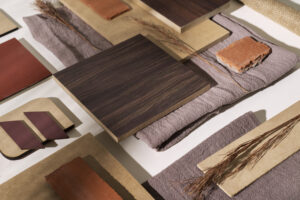
The materials and finishes you choose for your built-in wardrobe will greatly impact its appearance and durability. Popular options in Singapore include Melamine Faced Board, laminate, glass, and wood. Melamine Faced Boards is one of the popular choices that available in a wide range of colors and patterns, making it a versatile choice. Glass doors, especially mirrored ones, can make a room feel larger and brighter. Wood, while more expensive, adds a touch of luxury and warmth to a room. When selecting materials, consider both aesthetics and practicality.
4. Sliding Doors vs Hinged Doors
The type of doors you choose for your built-in wardrobe can also affect its usability and appearance. Sliding doors are a popular choice in Singapore due to their space-saving design. They don’t require extra room to open, making them ideal for small spaces. Hinged doors, on the other hand, offer easier access to the entire wardrobe but require more space to open fully. Your choice will depend on the available space and your personal preference.
5. Lighting
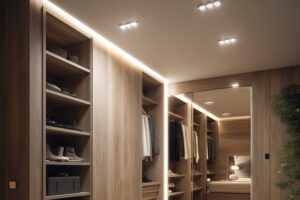
Adequate lighting is essential for making the most of your built-in wardrobe. Integrated lighting solutions, such as LED strips or spotlights, can be installed inside the wardrobe to illuminate the contents, making it easier to find what you’re looking for. Additionally, lighting can enhance the overall look of the wardrobe, adding a touch of sophistication and luxury.
Tips for Maximizing Space with Built-in Wardrobes
To truly maximize the potential of built-in wardrobes, consider the following tips:
1. Use Vertical Space
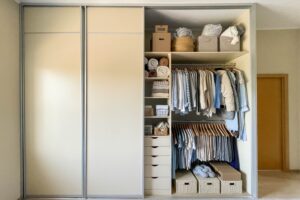
One of the key advantages of built-in wardrobes is the ability to use vertical space effectively. By extending the wardrobe to the ceiling, you can create additional storage for items that are used less frequently, such as seasonal clothing or luggage. Consider adding a ladder or step stool to access these higher areas easily.
2. Incorporate Mirrors
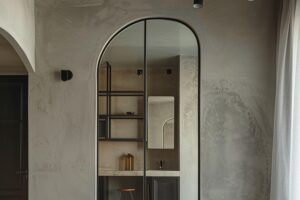
Mirrored doors not only add a touch of elegance to a room but also create the illusion of more space. In small Singaporean homes, this can make a significant difference in how spacious a room feels. Additionally, having a full-length mirror on your wardrobe doors is practical for checking your outfit before heading out.
3. Opt for Sliding Doors
As mentioned earlier, sliding doors are ideal for maximizing space in smaller rooms. They allow you to place furniture close to the wardrobe without worrying about door clearance. Additionally, sliding doors can be designed with various finishes, including mirrors or glass, to enhance the overall look of the room.
4. Invest in Quality Hardware
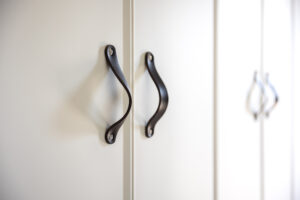
The longevity and functionality of your built-in wardrobe depend heavily on the quality of the hardware used. Invest in high-quality hinges, handles, and drawer slides to ensure that your wardrobe operates smoothly and lasts for years. This is especially important in a humid climate like Singapore, where cheap hardware can quickly degrade. Quality imported fittings like Hettich and Blum offer high quality products that could last you for a long time.
5. Add Pull-Out Accessories
To make the most of the internal space, consider adding pull-out accessories such as shoe racks, tie holders, or jewelry trays. These accessories keep your belongings organized and easily accessible, further enhancing the functionality of your built-in wardrobe.
Conclusion
In Singaporean homes, where space is a precious commodity, built-in wardrobes offer an exceptional solution for maximizing storage and enhancing the aesthetic appeal of interiors. Their ability to be customized to fit any space and meet specific storage needs makes them an invaluable addition to any home. By carefully considering factors such as location, layout, materials, and lighting, homeowners can create built-in wardrobes serve their practical needs and also contribute to the overall beauty and value of their property.
Ready to turn your wardrobe dream into reality? Book an appointment with E³.SPACE, and let us bring your vision to life.

